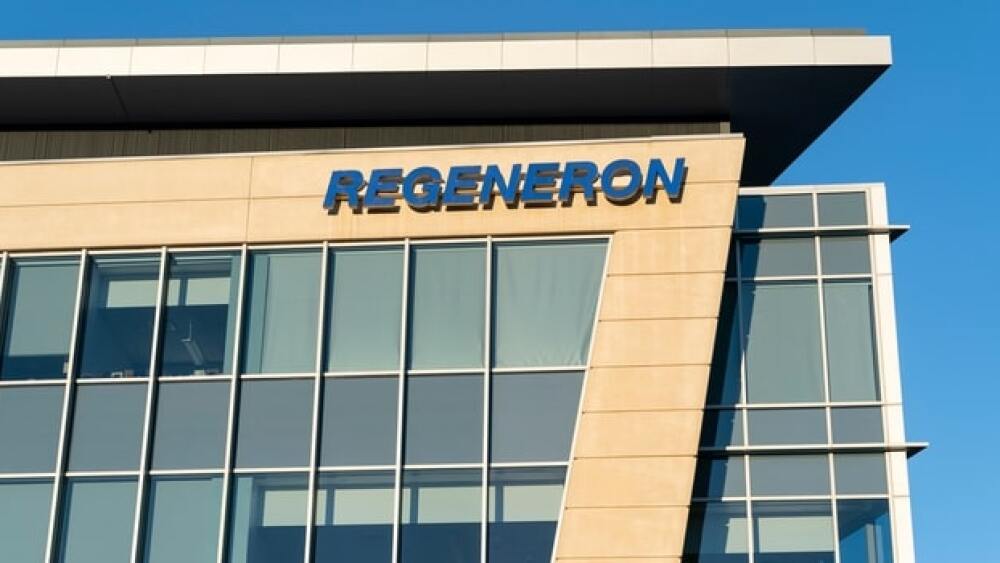Regeneron’s oncology strategy is centered around improving checkpoint inhibitor treatments with combination therapies, according to a pipeline overview presented Monday morning.
Lev Radin/Shutterstock
Regeneron’s oncology strategy is to improve checkpoint inhibitor treatments with combination therapies – centered around Libtayo – according to a pipeline overview presented to investors Monday morning.
In a webcast, David Weinreich, M.D., Regeneron’s EVP, global clinical development, noted four approaches: CD3 bispecifics, dubbed Signal 1; CD28 bispecifics, named Signal 2; tumor-targeted biparatopics; and modulating the immune response.
The focus is to “enhance and expand” PD-1 treatment with Regeneron’s combinations to “mix and match best approaches to broadening and deepening anti-tumor activity,” Weinreich said.
The company presently has three classes of investigational bispecifics being evaluated in ongoing Phase I/II studies. It is presenting data from two of these at EMSO. A mini-oral presentation will highlight ubamatamab, a bispecific designed to bridge MUC16 on cancer cells with CD3-expressing T cells to enhance local tumor-specific T-cell activation.
“We hope to develop ubamatamab as a monotherapy or in combination with Libtayo or a costim [costimulatory] MUC16 for ovarian cancer and potentially for other MUC16-expressing tumors,” Israel Lowy, M.D., Ph.D., SVP, translational clinical Sciences, oncology, said during the webcast.
Regeneron will present updated data from an expansion cohort combining Libtayo with fianlimab, a LAG-3 inhibitor, in advanced melanoma.
In two independent patient cohorts, the duo demonstrated greater than 60% response rates. One cohort saw a 62.5% overall response rate (ORR), six complete responses (CS) and 19 partial responses (PR). The second cohort saw a 65% ORR with one CR and 25 PRs.
The primary analysis of a Phase II trial of Libtayo alone in neoadjuvant cutaneous squamous cell carcinoma (CSCC) will also be shared.
Lowy described an “almost plug-and-play” approach to mix and match therapies to treat cancers.
To date, Regeneron has advanced 14 oncology drugs into the clinic, demonstrating preliminary therapeutic benefits in solid tumors and clinically meaningful benefits for hematological cancers with several bispecific antibodies. It has earned global regulatory approvals for Libtayo in multiple indications.
When asked what, aside from Libtayo, investors should be interested in, Weinreich replied, “The two near-term oncology assets are going to be ubamatamab and fianlimab, where we have very strong Phase II data in hand.” The third area of individual focus, he said, is CD28 bispecifics.
“For a while, this custom portfolio…has been restricted to positive animal data, which we know don’t always translate to clinical activity. We now have pretty convincing data that this costimulatory platform, our animal model, are predictive of what’s going to happen in the clinic.”
Weinreich called this “a major change in our pipeline and for investors looking at our work.”
Featured Jobs on BioSpace





